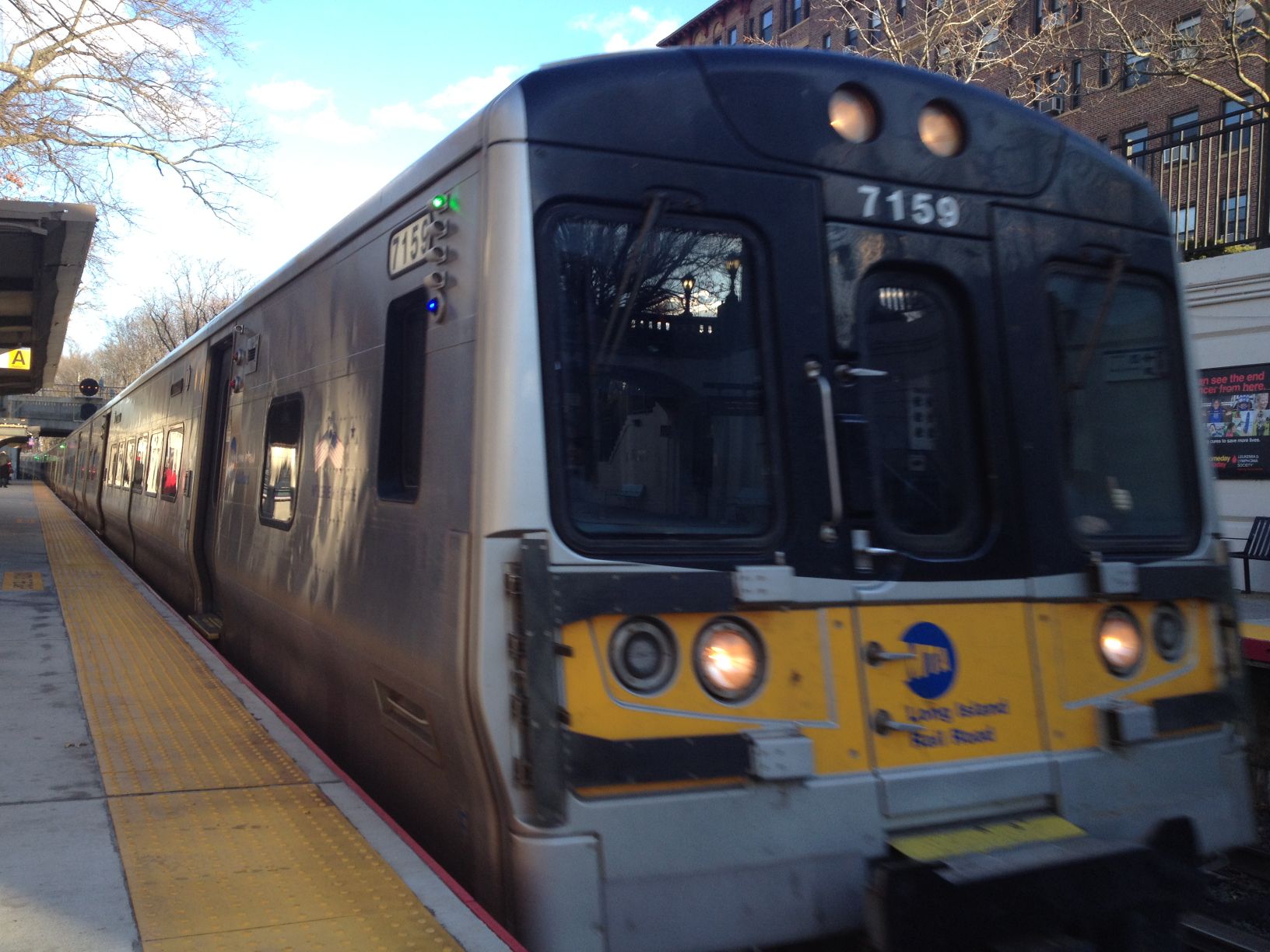Residents, elected officials and community organizations in Floral Park have reactivated a group to organize opposition to plans for a third track along the Long Island Rail Road’s Main Line.
Citizens Against Rail Expansion, or CARE, so far has more than 20 members committed to stopping the Metropolitan Transportation Authority’s plan, as they did in the mid-2000s.
“We’re prepared for a long-term fight here,” said Bill Corbett, a lifelong Floral Park resident and CARE’s spokesman. “We’re raising money and we’re going to fight it to the end.”
The MTA and Gov. Andrew Cuomo announced plans in January to add a third track along 9.8 miles of the Main Line between Floral Park and Hicksville to expand service from New York City to Long Island and ease train congestion.
That stretch of the Main Line is highly congested and services trains along the Port Jefferson, Oyster Bay, Ronkonkoma and Montauk branches.
The re-launch of CARE, which lists as allies village mayors, town and county officials, local school boards and other Floral Park organizations, coincided with the reactivation of the Village of Floral Park’s Third Track Task Force last week.
Established in 2007, the group assembled more than 140 members in opposition to the MTA’s third track proposal then.
A petition it circulated got more than 10,000 signatures from residents along the Main Line, Corbett said.
CARE’s organizers expect the organization’s membership to reach its previous level, he said.
“We’re all in the same boat here,” Corbett said. “We’re all working together.”
In addition to raising funds, CARE is working to get third track funding removed from Cuomo’s proposed state budget before lawmakers vote on it in April.
The group is encouraging residents to voice concerns to Cuomo’s office, Corbett said, and has been working with state Sen. Jack Martins (R-Mineola) to stop the plan in the Senate.
In a statement Tuesday, Martins said his objections remain unchanged, as communities along the Main Line are “being asked to bear the impact of the project, its years-long construction, and the resulting increased train and freight traffic all based on the unjustified claim that building it will guarantee an influx of reverse commuters.”
In a statement, Cuomo transportation spokeswoman Beth DeFalco said the third track proposal is “radically different” and reduces aspects of past plans that drew fire from residents.
“We urge communities to consider the new plan carefully before re-activating old organizations around what appear to be misconceptions and misunderstandings rooted in the past,” DeFalco said.
CARE will work “very closely” with Floral Park’s Third Track Task Force, Bill Corbett said, of which he and his wife, former Mayor Ann Corbett, are members.
Mayor Thomas Tweedy said the group, led by newly appointed Trustee Archie Cheng, aims to “inform and educate” residents about developments and about less disruptive alternatives to a third track.
The group had its first organizational meeting Feb. 8, Cheng said, and has started a Twitter campaign to voice opposition to Cuomo.
The Village of New Hyde Park’s LIRR Task Force has also recently met with MTA officials and voiced the village’s concerns about traffic and the elimination of parking spaces.
Village of Mineola Mayor Scott Strauss said he hadn’t been told of CARE’s re-launch, but his village will consider starting a task force once the MTA makes specific plans public.
“We’re doing everything in accordance with what we have to get some information and gain support, but it’d be a lot easier if we had a plan,” Strauss said.
Transit officials, business groups, union leaders and other proponents say the third track would ease commutes and spur economic growth on Long Island.
A 2014 study by the Rauch Foundation Long Island Index found over 10 years, it would add 14,000 jobs, 35,000 new residents, $3 billion in personal income, $5.6 billion to Long Island’s gross regional product, $40 million in sales tax revenue and $103 million in property tax revenue.
The MTA has not revealed specific plans for the project. But based on the former plan, CARE members say construction of a third track between Floral Park and Hicksville would cause “devastation” for residents and businesses in the affected area, Corbett said.
Opponents have also expressed concerns about the impact of the required 50 property acquisitions, worsening traffic at seven grade crossings along the stretch, loss of parking spaces, noise and increased freight traffic.
In a letter to the Nassau County Village Officials Association this week, mayors from the Main Line villages — New Hyde Park, Floral Park, South Floral Park, Mineola, Garden City, Bellerose, Stewart Manor and Westbury — said the LIRR could make improvements to its existing infrastructure to produce the same benefits as a third track without the harm.
They include adding a train yard in Huntington to preset trains for westbound morning operations, electrifying tracks on the Port Jefferson branch, completing and electrifying the second track to Ronkonkoma, eliminating grade crossings, untangling the tracks at Jamaica Center in Queens and updating the LIRR’s signals and switches.
DeFalco said the third track proposal is “smarter and more efficient” than past plans because it affects a fraction of the properties and will be built entirely within the LIRR’s right of way.
An envrionmental review will address grade crossing elimination, noise and safety, she said, and planners will conduct a thorough community outreach effort.
“From door-to-door personal discussions to online access that includes a project website with a direct link to the project’s planners, communication and dialogue will be key to this effort,” DeFalco said.
Reach reporter Noah Manskar by e-mail at nmanskar@theislandnow.com or by phone at 516.307.1045 x204. Also follow us on Twitter @noahmanskar and Facebook at facebook.com/theislandnow.



